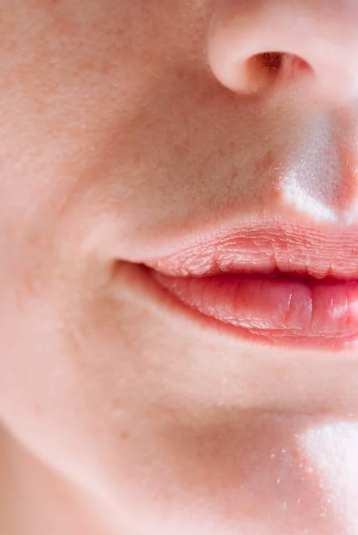Pigmented Lesion
Vancouver MediSpa, under the exceptional leadership of Kam, truly deserves every bit of praise it receives. From the moment I stepped in, I was greeted with warmth and professionalism. Kam is not only highly skilled and knowledgeable but also genuinely caring, ensuring every visit is a comfortable and enjoyable experience. The facilities are top-notch, impeccably clean, and equipped with the latest technology. Kam’s dedication to providing the best skincare solutions is evident in every aspect of the clinic. I couldn’t be happier with the results I’ve achieved here. Tario Sultan2024-03-29I have been dealing with acne and insecurities around my skin since I was a young girl, and I've tried everything! ...... Till I met Kam and her blessed Medi Spa. This woman is more than an aesthetician, she cares deeply about who I am and gives it her all to provide the best results--WHICH ARE MIRACULOUS! Thank you Vancouver Medi Spa, for your humble, warm, and delivering clinic. Laser is amazing, and Kam provides a plethora of education from A to Z. My face is now clear after 2 sessions...Something I dreamed of having since a young girl. The place is so clean, and filled with positivity. I especially love the ambiance of music and mantras that play in her spa during the sessions. She truly goes above and beyond to make her clients happy. :) Top laser medi spa in Vancouver for sure!!!!! Won't anything like this anywhere else. God Bless!
Tario Sultan2024-03-29I have been dealing with acne and insecurities around my skin since I was a young girl, and I've tried everything! ...... Till I met Kam and her blessed Medi Spa. This woman is more than an aesthetician, she cares deeply about who I am and gives it her all to provide the best results--WHICH ARE MIRACULOUS! Thank you Vancouver Medi Spa, for your humble, warm, and delivering clinic. Laser is amazing, and Kam provides a plethora of education from A to Z. My face is now clear after 2 sessions...Something I dreamed of having since a young girl. The place is so clean, and filled with positivity. I especially love the ambiance of music and mantras that play in her spa during the sessions. She truly goes above and beyond to make her clients happy. :) Top laser medi spa in Vancouver for sure!!!!! Won't anything like this anywhere else. God Bless! Sandra Al Hunaidi2024-03-21KAM IS AMAZING! The service is wonderful, FOTONA 4D!! Game changer. Thank you so much for the hospitality and great service. This is the BEST medi spa on the map.
Sandra Al Hunaidi2024-03-21KAM IS AMAZING! The service is wonderful, FOTONA 4D!! Game changer. Thank you so much for the hospitality and great service. This is the BEST medi spa on the map. sandra alhunaidi2024-02-22This review is for genuine knoweldge and kindness of kam. I went there for consultation and to get skin treatment but kam instead suggested i need to focus on my diet and be healthy from inside. She did not try to grab money like other estheticians. She suggested i should come back again once i get on track with my diet.
sandra alhunaidi2024-02-22This review is for genuine knoweldge and kindness of kam. I went there for consultation and to get skin treatment but kam instead suggested i need to focus on my diet and be healthy from inside. She did not try to grab money like other estheticians. She suggested i should come back again once i get on track with my diet. Manu Wr2024-02-18I have been getting laser treatments from Kam for the past few months. She is incredibly kind, knowledgeable, and professional. I’ve had laser treatments in the past that haven’t worked, so I was worried about investing in more. However, Kam did multiple test patches to see how my skin/ hair would react before charging me for any full treatments. I’m happy with my progress so far and can’t say enough good things about Kam!
Manu Wr2024-02-18I have been getting laser treatments from Kam for the past few months. She is incredibly kind, knowledgeable, and professional. I’ve had laser treatments in the past that haven’t worked, so I was worried about investing in more. However, Kam did multiple test patches to see how my skin/ hair would react before charging me for any full treatments. I’m happy with my progress so far and can’t say enough good things about Kam! Isabel Gittins2023-12-13Kam is super professional she knows what she is doing. Also she makes you feel so comfortable and welcomed. I’d recommend to anyone her clinic. Don’t hesitate to contact her.
Isabel Gittins2023-12-13Kam is super professional she knows what she is doing. Also she makes you feel so comfortable and welcomed. I’d recommend to anyone her clinic. Don’t hesitate to contact her. Monika Dienes2023-12-05I just love how Kam takes care of me, she really did great on my skin. Now I'm smooth as butter no need to shave. She even advised me on how to take care of my skin properly. I will definitely come back and highly recommend Vancouver Medispa.
Monika Dienes2023-12-05I just love how Kam takes care of me, she really did great on my skin. Now I'm smooth as butter no need to shave. She even advised me on how to take care of my skin properly. I will definitely come back and highly recommend Vancouver Medispa. Angelita Velasquez2023-11-03
Angelita Velasquez2023-11-03
Service
Pigmented Lesion Treatments in Vancouver, BC
With our advanced laser technology, you can enjoy a multitude of advantages, including precise targeting of lesions, rapid healing, and excellent cosmetic outcomes.

TREATMENT TIME
15-25 Minutes

DOWNTIME
3-5 Days

SESSIONS REQUIRED
1-3 Sessions

DISCOMFORT LEVEL
Mild-Moderate

Vancouver Medi Spa
Why Choose Us For Pigmented Lesion Treatments
Concerned about scarring or pigment changes? Rest assured that our laser therapy minimizes these risks by gently ablating superficial layers of skin or delivering controlled thermal energy for rejuvenation. Our experienced practitioners tailor each session to your individual needs, ensuring optimal results and a positive treatment experience.
With our advanced laser technology, you can enjoy a multitude of advantages, including precise targeting of lesions, rapid healing, and excellent cosmetic outcomes. Our treatment offers a safe and effective solution for removing various skin concerns, such as keratoses, moles, and pigmented lesions, with minimal discomfort and downtime.
Frequently Asked Questions
Learn More About Pigmented Lesion Treatments
Our Er:YAG laser emits a specific wavelength of light absorbed by water content in skin cells. This targeted energy can effectively remove pigmented lesions like age spots, birthmarks, and moles by vaporizing superficial layers of skin or delivering thermal energy for rejuvenation.
Traditional treatments for pigmented lesions include surgical excision and cryotherapy. These methods involve removing or destroying the lesion through cutting or freezing. While effective, they may result in scarring or pigment changes.
Laser treatment offers numerous benefits, including rapid healing, excellent cosmetic outcomes, and suitability for various skin types. It allows for precise targeting of lesions with minimal impact on surrounding tissue, ensuring safe and effective results.
Seborrheic keratoses (SKs) are common benign skin growths that appear as brown or black bumps. While harmless, they can cause cosmetic concern, particularly if located on visible areas like the face or neck. Laser treatment offers a safe and efficient solution for their removal.
Actinic keratoses (AKs) are precancerous lesions caused by sun exposure, appearing as rough, scaly patches on the skin. Early detection and treatment of AKs are essential to prevent their progression into skin cancer. Laser therapy can effectively target and remove these lesions, minimizing the risk of malignancy.
Nevi, commonly known as moles, are benign collections of pigment cells that vary in size, shape, and color. While most moles are harmless, changes in size, shape, or color may indicate a risk of melanoma, a serious form of skin cancer. Laser treatment offers a progressive and lasting solution for addressing moles and achieving clearer, healthier skin.
Witness the remarkable results of laser treatment for pigmented lesions through our before and after gallery. See firsthand the transformative effects of our advanced laser therapy in achieving smoother, clearer skin.
While Nd:YAG laser therapy for rosacea is considered safe and well-tolerated, some clients may experience mild side effects such as temporary redness, swelling, or skin sensitivity following the treatment. These side effects are typically mild and resolve on their own within a few days. Our team will provide detailed aftercare instructions to help minimize discomfort and optimize healing following each treatment session.
Location
Conveniently Located In Vancouver, BC
Conveniently nestled in the heart of Downtown Vancouver, Vancouver Medi Spa offers easy access to premium aesthetic treatments at our centrally situated location on 1086 Hornby Street. Operating from 10 am to 8 pm every day, our extended hours cater to your busy schedule, ensuring that you can prioritize self-care and beauty enhancement at a time that works best for you. Whether you’re a local resident or visiting the vibrant city of Vancouver, our prime location makes it effortless to indulge in a rejuvenating spa experience and discover the transformative benefits of our advanced treatments.
Vancouver Medi Spa
Schedule a consultation
If you’re ready to take the first step towards achieving your aesthetic goals, schedule a consultation with us today. During your consultation, our experienced team will assess your unique needs and develop a personalized treatment plan tailored to you.
Whether you’re interested in laser hair restoration, pigmented lesion removal, or any of our other services, we’re here to help you look and feel your best. Contact us at 604-620-1772 or email us at info@vancouvermedispa.ca to book your consultation now.
First time clients
Claim our exclusive Medi Spa offer
Book your first appointment today and receive a complimentary wellness consultation with one of our experienced practitioners. Discover personalized solutions to address your unique needs and embark on a path towards total well-being. From rejuvenating spa treatments to therapeutic massage and skincare solutions, we’re here to help you look and feel your best from the inside out. Don’t wait any longer to prioritize your self-care journey. Claim your offer now and let us guide you towards a radiant, revitalized you.
